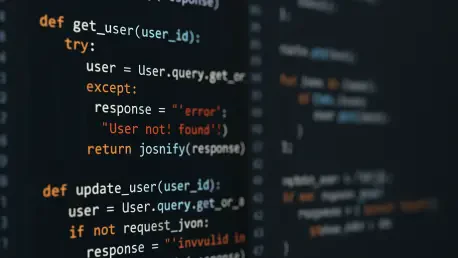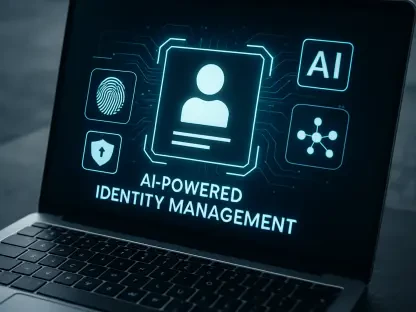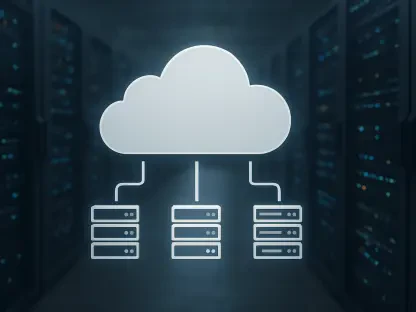Within the rapidly evolving landscape of software development, AI-generated code presents a paradox of innovation and risk. As developers increasingly turn to AI tools to automate coding tasks, a noteworthy trend has emerged—nearly half of developers rely on these tools to boost productivity and efficiency. Despite these advancements, the lack of stringent security measures poses significant concerns. A study by Cloudsmith reveals that only 67% of developers review AI-generated code before deployment, suggesting a potential compromise in software security. Given such dynamics, the role of AI in coding requires careful scrutiny to balance innovation with security.
Understanding AI’s Role in Software Security
AI’s integration into software development has transformed traditional practices, introducing efficiencies yet also creating challenges in maintaining software security. Central to this discussion is the critical inquiry into whether AI-driven coding could become a weak link in the security chain. The primary concerns involve the adequacy of existing security protocols when code is not fully vetted and the trust developers place in AI-generated content, which could inadvertently open doors to cyber threats. Moreover, the reliability and comprehensiveness of the controls available to manage AI’s contributions are under question, emphasizing the need for ongoing evaluation and adaptation in an evolving technological landscape.
The Rise of AI-Generated Code
The rise of AI-generated code is not merely a phenomenon of interest but a transformative trend influencing the entire software development sector. With major players like Google and Microsoft leading the charge, AI-written code is becoming increasingly common. Google notes that a significant portion of its internal code is AI-generated, subject to rigorous human oversight, highlighting the delicate balance between automation and security. This widespread adoption underscores the broader relevance of the topic as businesses seek ways to expedite development processes while simultaneously exploring methods to safeguard their digital assets. The emphasis on these frameworks cannot be overstated as AI’s reach widens.
Research Methodology, Findings, and Implications
Methodology
To investigate the potential risks of AI-generated code in software security, a comprehensive approach was employed. The methodology incorporated qualitative analysis and quantitative surveys of developers across various sectors. Tools used in the research involved data analytics software to assess patterns in AI code adoption and security review processes. Furthermore, expert interviews provided deeper insights into industry-standard practices, allowing for a nuanced understanding of the current landscape. The methodology ensured a robust collection of data, facilitating a well-rounded exploration of security implications tied to AI-driven code and its management.
Findings
The findings reveal that the convenience of AI in generating code is offset by a lack of diligence in vetting. While productivity gains are measurable, only 67% of developers systematically review AI-produced code, leaving security safeguards inconsistent. Furthermore, a notable trust issue emerges, with 20% of developers expressing complete trust in AI without additional oversight. Such reliance has enabled exploits like ‘slopsquatting,’ where malicious entities capitalize on AI’s suggestive naming conventions to introduce vulnerabilities. This research highlights a pressing issue: although AI can drive innovation, inadequate governance can render systems susceptible to targeted attacks, entailing serious security ramifications.
Implications
The implications of the study extend into practical, theoretical, and societal domains. Practically, organizations must develop stricter policies and automated controls within the software supply chain to address the identified vulnerabilities. Theoretically, this research invites a reassessment of AI trust dynamics in technology and the refinement of security models to adapt to AI’s evolving capabilities. Socially, the findings stress the necessity for a dialogue on the ethical use of AI in code creation and its potential impacts on data privacy. These revelations signal a call to action for enterprises to realign their security protocols in partnership with AI technology advancements.
Reflection and Future Directions
Reflection
Reflecting on the study, the research process highlighted the evolving complexity of AI’s infiltration into software development. One primary challenge encountered was the ever-changing AI landscape, requiring flexible methodologies and up-to-date data collection practices. Overcoming these hurdles necessitated adaptive research design and ongoing engagement with industry experts to ensure alignment with contemporary developments. While the study effectively discussed several key areas, addressing additional dimensions such as the long-term impacts of AI code dependency could provide further insights. The research’s current scope, however, adequately showcases the balance between innovation and caution in AI-driven practices.
Future Directions
The study opens pathways for further research to address unanswered questions about the future of AI-generated code and security. Future research could investigate cases of successful AI implementation that mitigated security risks, offering templates for best practices. Additionally, exploring the intersection of AI and cybersecurity, including innovations in detecting vulnerabilities in AI-generated code, presents promising avenues. Another area of interest could be studying the psychological aspects of developers’ trust in AI and its effect on conscientious code review practices. These directions present an opportunity for expanding the discourse and enhancing the resilience of software development practices.
Conclusion
The growing reliance on AI-generated code introduces unique challenges and opportunities for software development. The findings highlight a significant gap in security practices, with many developers bypassing essential code reviews, leading to vulnerabilities. By acknowledging these risks, organizations can take actionable steps to enforce stronger controls and encourage human oversight in AI-based processes. Future engagements can focus on refining security paradigms and exploring innovative cross-disciplinary solutions. Ultimately, the research contributes to a critical dialogue on integrating AI into coding while maintaining robust security infrastructures in an increasingly automated world.









